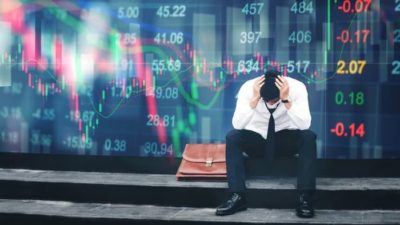2020 turned out to be a surprisingly good year to have been invested in S&P/ASX 200 Index (ASX: XJO) shares. As long as you didn't sell your entire portfolio on 23 March, that is. Despite the pandemic, the ASX 200 quickly recovered from the initial market crash we saw in March, and ended up finishing the year a tad below where it started.
Over in the United States (US), things were even better. The flagship S&P 500 Index (INDEXSP: .INX) ended up giving investors a very healthy gain of roughly 16% for the year. That was despite the US getting arguably harder hit by the virus.
But now 2020 is (thankfully) in our rear-vision mirrors, attention is on what 2021 will bring.
Here are 3 reasons why 2021 could end up being an even better year for ASX shares and investors than 2020 was.
Political certainty for shares
This applies mostly to the United States, but as we all know, what happens in the US affects the ASX. President-elect Joe Biden will take office on 20 January. When he does, both chambers of the US Congress will also be under Democratic Party control. This replaces the rather… volatile Trump Administration and the divided control of Congress that has been prevalent since 2018.
Many in the investing community won't be overjoyed with the prospect of some parts of the Democrats' agenda, such as higher taxes. Even so, there's a reason why US markets (and the ASX) jumped when the results of the Georgia senate elections become obvious earlier this month. Unified control of the US government promises more stability and predictability. That's something markets love (and arguably haven't been getting much of over the past 2 years).
Pent up demand
Reporting in the Australian Financial Review (AFR) today tells us that "households and businesses have stockpiled more than $200 billion of extra savings" over the past year so so. That's in large part due to the government's unprecedented stimulus programs such as JobKeeper.
According to the report, "updated Treasury modelling shows the government's fiscal support will add 5 per cent to economic output in 2020-21 and boost gross domestic product by 4.5 per cent in 2021-22, compared with the negative and flat GDP growth rates that would have occurred without any stimulus spending".
That's in spite of the fact that most of the programs are scheduled to end in March.
This is indisputably good news for the economy. And what's good for the economy is usually good for the companies that trade within it.
Ultra-loose monetary policy looks set to continue for ASX shares
Last year, the Reserve Bank of Australia (RBA) lowered the cash rate to several new all-time lows. It also initiated an Australian quantitative easing (QE) program for the first time in our country's history.
As it stands today, interest rates are sitting at just 0.1% (which is virtually zero). These rock-bottom rates are very conducive to higher share prices since they reduce the appeal of other asset classes. These primarily include cash in savings accounts, and fixed-interest investments like bonds.
The RBA has indicated that lower rates are here to stay for at least a couple of years. Further, it has also indicated that it is less inclined than it has historically been to raise rates if inflation kicks off. This should also help in boosting 'risk-on' asset prices like shares.
Foolish takeaway
No one can predict the future, and this is especially so when it comes to the volatility of the share market. I'm not saying there's no way ASX shares can go down at any point during the course of this year, far from it. We are likely to see the usual bouts of volatility at least at some point during the year. But as it currently stands, in my view there are far more short-term tailwinds than headwinds pushing against the market as we embark on a new investing year.









